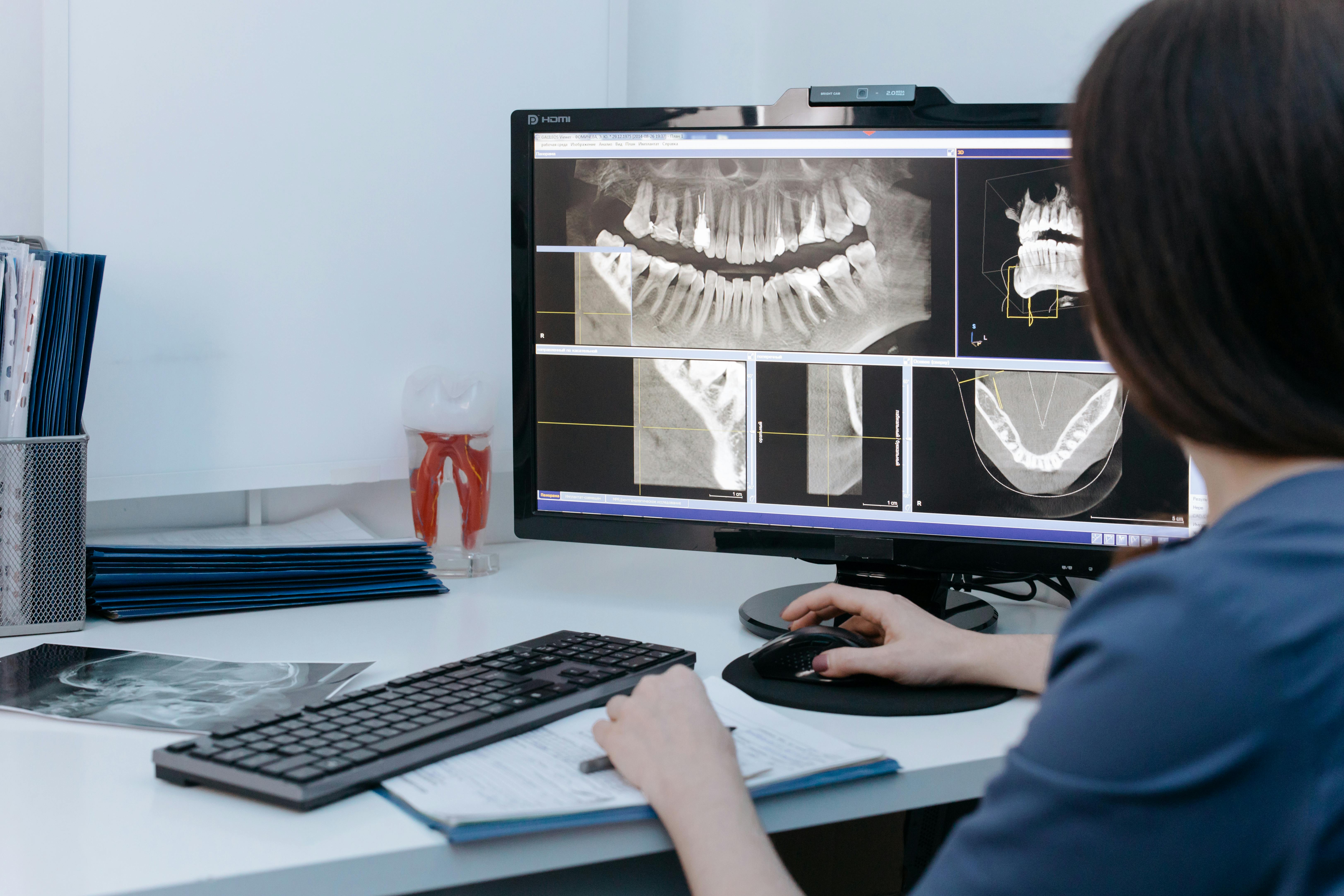Retainers are an important part of orthodontic treatment. They are used to help keep teeth in their desired positions after braces have been removed. Retainers can also be used to move teeth back into their original positions if they have shifted over time. This process is known as a “retainer shift,” and it can be a great way to restore your smile without having to undergo major orthodontic treatment again.
What to Expect from Your Dental Retainer
A dental retainer is a custom-made device that your orthodontist will fit you with after your braces come off. It’s designed to help keep your teeth in the proper position, while also helping you maintain better oral hygiene. Although retainers can be uncomfortable for some, they are essential for keeping your teeth healthy and aligned. Here’s what to expect when wearing a dental retainer:
It Can Take Some Time to Get Used To: When you first get fitted for a retainer, it may feel tight and uncomfortable. This is a normal feeling and should go away after the first few days of wearing it. As time goes on, your mouth will adjust and you’ll become more comfortable with the retainer. You may even forget that it’s there.
You Need to Wear It Regularly: To keep your teeth in their new position, you need to wear your retainer regularly. Most orthodontists recommend wearing it for at least 20 hours each day, though this may vary depending on the individual case. Make sure that you follow all instructions given by your orthodontist in order to ensure that your teeth stay in place.
It Needs to Be Cleaned: Just like any other dental appliance, retainers need regular cleaning. Make sure that you brush and floss around the appliance every day, as well as any other areas of your mouth where food gets stuck easily. Additionally, use a denture cleaner or vinegar soak to clean the retainer itself every week or so.
You May Need Adjustments: As time goes on, you may find that your retainer doesn’t fit as well as it used to. This is normal and can happen due to changes in the shape of your mouth or jaw over time. Your orthodontist can make adjustments if needed so that the retainer fits comfortably again.
It Can Affect Speech: Some people find that their speech is affected when they first start wearing a dental retainer. This usually goes away over time as you get used to speaking with it in place. If necessary, practice speaking out loud with the retainer in place until you feel comfortable talking normally again.
Wearing a dental retainer can be an adjustment at first but is an important part of maintaining good oral health after braces come off. Follow all instructions from your orthodontist regarding use and cleaning of the appliance, and make sure to have any necessary adjustments made if needed.

Possible Side Effects of Wearing a Dental Retainer
Wearing a dental retainer is an important part of maintaining your teeth after orthodontic treatment, but it can have some side effects. The most common side effects include soreness and discomfort in the mouth, which can be caused by the retainer pressing too hard against your teeth or gums. It can also cause saliva build up due to the presence of the retainer, leading to bad breath. In some cases, irritation of the inner cheeks and minor cuts may occur due to rubbing against the retainer.
If any of these side effects occur, it is important to contact your dentist as soon as possible so that they can adjust the fit or provide you with a new one if necessary. Additionally, wearing a retainer for too long can cause teeth to shift back into their original positions if worn for too long or not worn correctly during sleep. It is important to follow your dentist’s instructions regarding how often you should wear it and for how long in order to avoid this problem.
Finally, wearing a dental retainer can also make it difficult for you to speak clearly due to the pressure placed on your mouth and tongue when speaking. To avoid this issue, practice speaking with it in front of a mirror until you become comfortable with using it while talking. Also be sure that you are wearing it properly so that your speech does not become strained when using it.
How to Care for Your Orthodontic Retainer
Caring for your orthodontic retainer is an important part of the process when you are undergoing any type of orthodontic treatment. It is important to keep your retainer clean and free from bacteria and debris in order to ensure that it works effectively and that it doesn’t cause any irritation or discomfort. Here are some tips on how to care for your orthodontic retainer:
• Clean your retainer regularly – You should clean your retainer at least once every day with a soft toothbrush and warm water. Make sure to rinse it thoroughly afterwards, as any residue left on the appliance can cause irritation. You can also use a special cleaning solution made specifically for retainers.
• Store your retainer properly – Make sure to store your retainer in a safe place when not in use, such as a hard plastic case or a box with a lid. This will help keep dirt and debris from getting into the appliance, which can affect its effectiveness.
• Avoid extreme temperatures – Be careful not to expose your retainer to extreme temperatures, such as hot water or direct sunlight, as this could cause it to warp or become brittle over time.
• Don’t eat or drink while wearing it – Never eat or drink while wearing your orthodontic retainer, as this could cause food particles and liquid to get trapped between the device and your teeth, causing bacteria build-up that could lead to plaque formation and tooth decay.
• Inspect it regularly – Check your appliance every few weeks for signs of wear and tear or discoloration. If you notice any damage, be sure to contact your orthodontist right away so they can make the necessary repairs or replacements.
By following these tips, you can ensure that your orthodontic retainer stays clean and in good condition throughout the course of treatment. Remember, proper care of your appliance is essential for achieving the best possible results from your orthodontic treatment!
How Much Does it Cost to Have Teeth Repositioned with a Retainer?
The cost of having your teeth repositioned with a retainer depends on the type of retainer and the complexity of your teeth alignment. Generally, the cost of retainers ranges from $500 to $1,500. The cost can also vary depending on the severity of misalignment and whether additional treatments such as braces are required. It is important to understand that this cost is an investment in your oral health and should not be taken lightly.
Invisalign is one option for repositioning your teeth with a retainer. This type of treatment typically involves wearing clear aligners made from plastic molds that fit over your teeth. Invisalign retainers are customized to fit your mouth and gradually move your teeth into desired positions. The average cost for Invisalign retainers is between $3,500 and $8,000.
Traditional metal braces are another option for repositioning your teeth using a retainer. This type of treatment involves metal brackets being bonded to each tooth which hold wires in place that gradually move the teeth into desired positions. Braces typically range in price from $3,000 to $7,000 depending on the duration of treatment and complexity of alignment issues.
Your dentist may also recommend using a Hawley Retainer or Clear Aligner Retainer after you have completed orthodontic treatment or after you have had any restorative dental procedures done that affected tooth alignment. Hawley retainers are made from acrylic or wire material while Clear Aligner Retainers are made from plastic molds similar to Invisalign trays and are removable for cleaning purposes. The costs for these types of retainers range from $200 to $600 depending on their complexity.
It’s important to discuss all available options with your dentist before making any decisions about which type of retainer works best for you. Your dentist will be able to provide information about the various costs associated with each type so that you can make an educated decision about how much you’re willing to spend on having your teeth repositioned with a retainer.

Conclusion
Retainers are an effective solution to shift teeth back into place and can be used either as a preventative measure or as a treatment for misaligned teeth. There are different types of retainers available, so it is important to speak to your dentist or orthodontist about which type is best for you. With proper care, retainers can last for years and help keep your teeth in the proper position.
If you have misaligned teeth and are considering using a retainer to correct them, it is essential that you discuss the pros and cons with your dental professional before making a decision. Retainers can be an effective tool in achieving the smile of your dreams and should not be overlooked as an option for correcting misaligned teeth.
